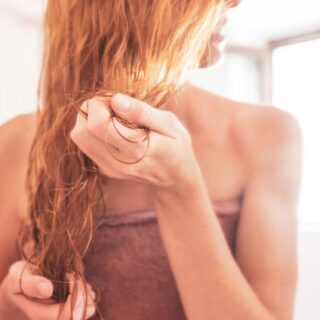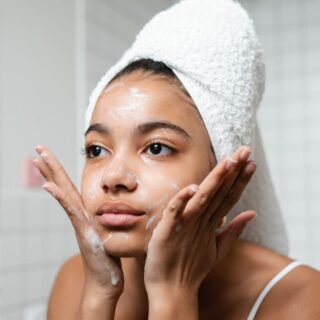Have you ever run your fingers through your hair and felt it snap, snag, or just look dull in the mirror? When you’re dealing with split ends, brittleness, or general dryness, it’s natural to feel frustrated. Fortunately, knowing exactly how to fix damaged hair can make all the difference between struggling with lackluster locks and enjoying smooth, radiant strands. By focusing on daily practices, targeted treatments, and an overall healthy routine, you can restore your crowning glory and keep it looking its best.
Understanding the Nature of Hair Damage
Before you jump into a new regimen, it helps to understand what hair damage actually entails. Your hair shaft has multiple layers, each contributing to strength, elasticity, and shine. Repeated rough handling, excessive chemical use, and even harsh weather can weaken those layers. Once this structure becomes compromised, you may notice more frizz, breakage, and split ends.
You might also see a lack of shine or softness because the cuticle—the outer protective layer of the hair—doesn’t lie flat as it should. If the cuticle is raised or broken, the inner cortex is more susceptible to further damage. As a result, you could end up in a cycle of dryness and brittleness unless you take active steps to interrupt it.
Common Culprits Behind Damaged Hair
If you’re wondering what may be sabotaging your strands, consider the following frequent offenders:
- Excessive Heat Styling: Blow dryers, flat irons, and curling wands can reach extremely high temperatures, which compromise the hair’s natural proteins.
- Chemical Overload: Coloring, bleaching, perming, or relaxing your hair pushes it to its limits, often leading to dryness or breakage if done too frequently or incorrectly.
- Environmental Exposure: From scorching sun rays to chlorinated pool water, environmental factors can leave your hair parched and prone to splitting.
- Rough Handling: Overzealous brushing, tight hairstyles, or vigorous towel-drying can cause mechanical stress on your strands.
By pinpointing which factors affect your hair the most, you can start to address the damage where it truly begins.
Adopt Daily Habits to Start the Repair Process
Daily habits have a remarkable impact on your hair’s condition. Seemingly small changes can yield significant results over time. To give your hair a fresh start:
- Gentle Washing: Choose a mild shampoo and wash your hair only when necessary. Scrubbing vigorously or washing too often strips away the natural oils that keep strands moisturized.
- Condition with Care: Follow up each shampoo with a conditioner designed for damaged or dry hair. Focus it on the mid-lengths and ends, where your hair is typically most vulnerable.
- Use a Wide-Tooth Comb: Detangle gently, starting from the ends and working up to the roots, to avoid pulling or snapping fragile strands.
- Pat Hair Dry: Instead of rubbing your hair with a towel, gently pat it to remove excess water. This prevents undue friction against the cuticle.
These small yet powerful tweaks to your routine can gradually restore softness and bounce to your hair.
Nourish and Replenish with the Right Products
When it comes to how to fix damaged hair, product selection can be your biggest ally. Consider looking for these attributes in your hair care arsenal:
- Protein-Infused Treatments: Hair strands are primarily made of proteins, so protein-rich masks or leave-in conditioners can help patch up microscopic gaps in the shaft.
- Deep Conditioning Masks: Weekly or bi-weekly deep conditioning treatments boost hydration levels, making your hair more resilient over time.
- Natural Oils: Argan, coconut, and jojoba oils are often praised for their capacity to penetrate the hair shaft. They can reduce friction, add shine, and strengthen each strand.
- Silicone-Free Options: In some cases, silicones can temporarily mask damage without truly repairing it. If you notice build-up or dullness, give silicone-free products a try.
It’s less about chasing every trendy ingredient and more about understanding your hair type and damage level. Don’t hesitate to experiment until you find the right balance of moisture and protein for your unique needs.
The Importance of Balanced Nutrition
Healthy hair isn’t just about what you apply on the outside; it also thrives on what you put into your body. If you want to fix damaged hair from within, keep an eye on your daily diet. Here are a few pointers:
- Protein-Rich Foods: Incorporate lean meats, beans, and legumes to provide the amino acids that form the building blocks of your hair.
- Omega-3 Fatty Acids: Found in foods like salmon, chia seeds, and walnuts, omega-3 fatty acids support scalp health and natural shine.
- Vitamins and Minerals: Vitamins A, C, D, and E, along with iron and zinc, all play key roles in maintaining hair growth and strength.
A well-rounded diet, paired with adequate hydration, creates the internal foundation needed for your damaged hair to bounce back.
Minimize Heat Styling and Chemical Treatments
One of the fastest ways to derail your progress is by constantly exposing your hair to damaging influences. If you rely on hot tools or chemical processes often, try spacing out each session or switching to more gentle techniques:
- Air-Drying: Whenever possible, allow your hair to dry naturally. If you must blow-dry, use a diffuser attachment on a low-heat setting.
- Heat Protectants: Before using any hot tool, apply a heat protectant spray or cream to act as a barrier between your hair and direct heat.
- Gentler Color Alternatives: If you color your hair, explore ammonia-free or semi-permanent dyes. These options can be less harsh on already-stressed strands.
- Professional Guidance: For bleaching, perming, or relaxing, consider consulting a trusted stylist. They can reduce the likelihood of over-processing your hair.
Reducing heat and chemicals, even slightly, gives your hair the break it needs to heal.
Protective Hairstyles and Regular Trims
How you wear your hair each day also plays a role in its health. Protective hairstyles are styles that tuck your ends away and reduce direct manipulation. This helps minimize breakage and splitting. You can try braids, buns, or twists that don’t pull too tightly on your scalp.
Additionally, don’t shy away from getting regular trims. It may seem counterintuitive to cut your hair when your goal is to make it healthier and possibly grow it longer, but removing split ends prevents them from traveling up the shaft and causing further issues. Even a small trim makes a noticeable difference in how your hair looks and feels, cutting off the most damaged sections so healthier hair can take center stage.
Listen to Your Hair’s Signals
While damage can appear in many forms, your hair often gives you hints about what it needs. For instance, if it feels limp or spongy, it might be over-conditioned and could benefit from a protein boost. On the other hand, if it’s rigid or snapping easily, you might need more moisture to restore elasticity. Pay attention to the way your hair reacts after each product or styling approach.
If you’re diligent about monitoring these signals, you’ll begin to pick up patterns. Over time, you can adjust your routine so your hair receives exactly the right balance of moisture, protein, and gentle handling.
Daily Mindset Shifts for Long-Term Hair Health
Truly addressing how to fix damaged hair requires a shift in daily mindset. Remember:
- Patience is Key: Reversing damage doesn’t happen overnight. Consistency is the magic ingredient that helps you see real improvements.
- Quality Over Quantity: Focus on well-formulated hair care products rather than crowding your shelf with multiple items you don’t truly need.
- Self-Care Matters: Stress can manifest in your hair, too. Make time for relaxation, exercise, or any activity that reduces tension. Reduced stress often correlates with healthier hair growth.
When you show your hair consistent care from the inside out, you set the stage for renewed health and vibrancy.
Embrace Healthy, Shiny Hair: Your Journey to Damage-Free Strands
Ultimately, learning how to fix damaged hair is about forming habits that champion the well-being of your strands. By being patient, selecting the right products, and listening to what your hair tells you, you can put an end to breakage, dullness, and split ends. Each gentle wash, nourishing treatment, and mindful styling session helps rebuild your hair’s integrity and resilience. You have the power to transform brittle locks into the lush, silky hair you’ve always wanted—and it all starts with treating your hair the way it deserves. Stay consistent, stay dedicated, and enjoy watching your rejuvenated hair become a source of confidence and pride.


